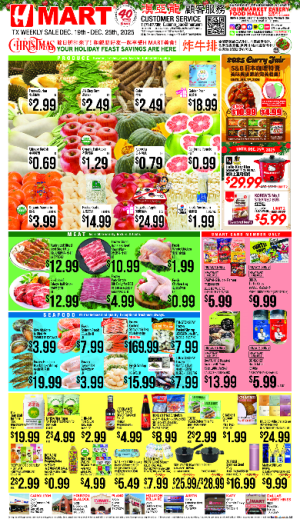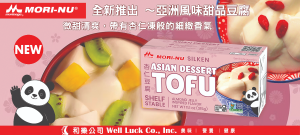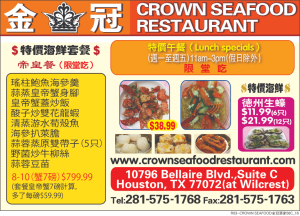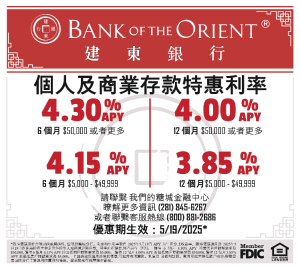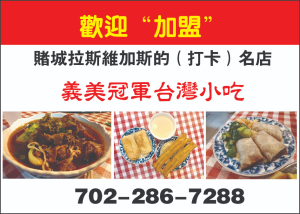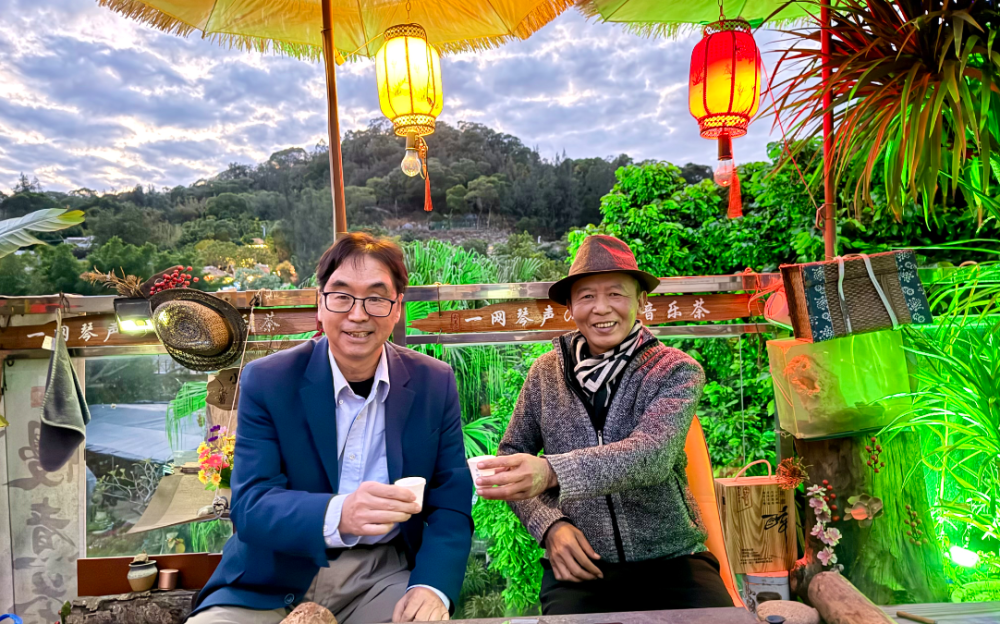您未见过的大明成化斗彩鸡碗 宪宗皇帝与万贵妃的隐秘世界
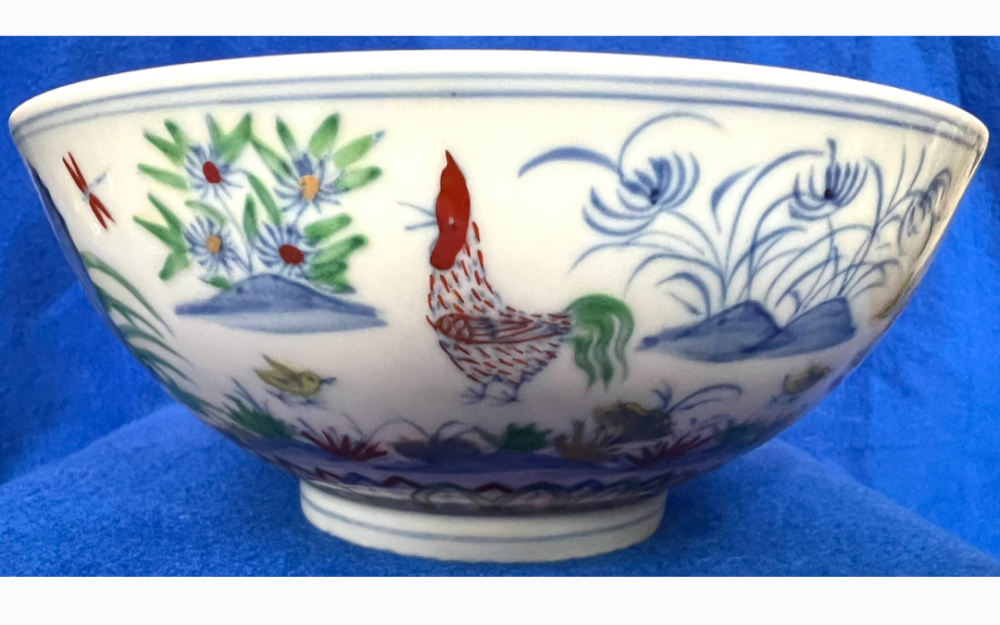
Ming Dynasty Chenghua Colorful Chicken Bowl The Secret World of Emperor Xianzong and Imperial Concubine Wan
【美南新闻泉深】斗彩鸡缸杯和斗彩鸡碗(也叫斗彩鸡缸碗)是大明成化制瓷业的“最高科技”,也是传说中成化帝与万贵妃的爱情见证。成化帝是明朝第八位皇帝朱见深(1447—1487年),明朝英宗朱祁镇长子,1464至1487年在位,年号宪宗皇帝。
The Colorful (Chinese named as Dou Cai)Chicken Cups and Colorful Chicken Bowls are the “highest technology” of Chenghua porcelain industry in the Ming Dynasty. They are also witnesses of the real love between the legendary Emperor Chenghua and Imperial Concubine Wan. Emperor Chenghua was the eighth emperor of the Ming Dynasty, Zhu Jianshen (1447-1487). He was the eldest son of Zhu Qizhen, the Emperor Yingzong of the Ming Dynasty. He reigned from 1464 to 1487, with the reign name of Emperor Xianzong of Ming Dynasty.
在古瓷器行业,有“明看成化,清看雍正”之说。大明成化瓷器,几乎每件著名的文物,背后都有传奇故事。大明成化斗彩鸡缸杯和斗彩鸡碗,就是其中的典范。这些瓷器本就出自皇家,地位尊贵。后世历代帝王,对它们更是无比追捧。簿簿的斗彩鸡缸杯和斗彩鸡碗,雄踞瓷器神品之位,表明大明成化斗彩鸡缸杯和斗彩鸡碗其内大有乾坤。
In the ancient porcelain industry, there is a saying that "the Ming Dynasty looks at Chenghua, the Qing Dynasty looks at Yongzheng". Almost every famous cultural relic of Ming Dynasty Chenghua porcelain has a legendary story behind it. The Ming Dynasty Chenghua colorful Chicken Cup and colorful Chicken Bowl are typical examples. These porcelains originally came from the royal family and had a distinguished status. Emperors of later generations were extremely fond of them. Colorful Chicken Cup and Colorful Chicken Bowl are among the most prized porcelains, indicating that the Colorful Chicken Cup and Colorful Chicken Bowl have great potential meaning within them.

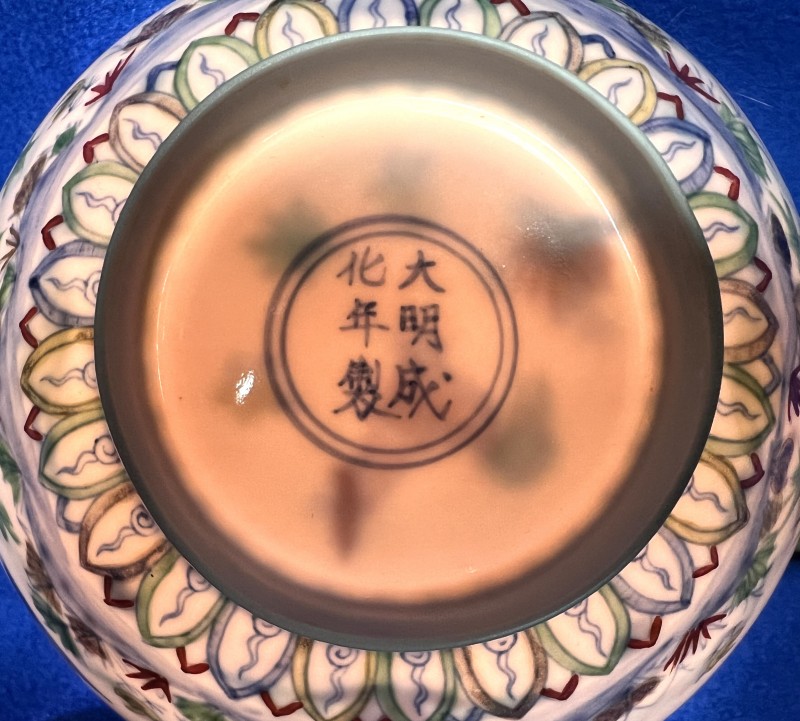
光线照射下斗彩鸡碗簿到可以看到内部的图案
斗彩是瓷器彩绘的一种工艺,流行于江西景德镇等地。它是在坯体上,先用青花描绘图案轮廓,施透明釉,高温烧成后,再在釉上用各种绚丽灿烂的彩料填绘,在明亮的釉面上闪耀迷人的光彩,遥相辉映、争奇斗妍, 这就是成化斗彩瓷器的精华。 专为皇帝御制的斗彩鸡碗,还会贴上纯真黄金,经低温彩炉烘烤后,金碧辉煌,最后成型,难度极大。由于彩绘方式分釉上彩和釉下彩两部分,有拼逗之意,故称为“斗彩”或“逗彩”。
Dou Cai (Colorful) is a technique for painting porcelain, which is popular in Jingdezhen, Jiangxi and other places. It is to first draw the outline of the pattern with blue and white color on the body, apply a transparent glaze, and then fire it at high temperature, and then fill it with various gorgeous and brilliant color materials on the glaze. Complementing each other and competing for beauty and brilliant, this is the essence of Chenghua colorful porcelain. The colorful chicken bowl, which was transformed into the emperor's imperial order, will also be affixed with pure gold. After being baked in a low-temperature color oven, it will be resplendent. The final shape is extremely difficult to make. Because the painting method is divided into two parts: overglaze color and underglaze color, which means to fight with each other, it is called "Dou Cai" or Colorful.
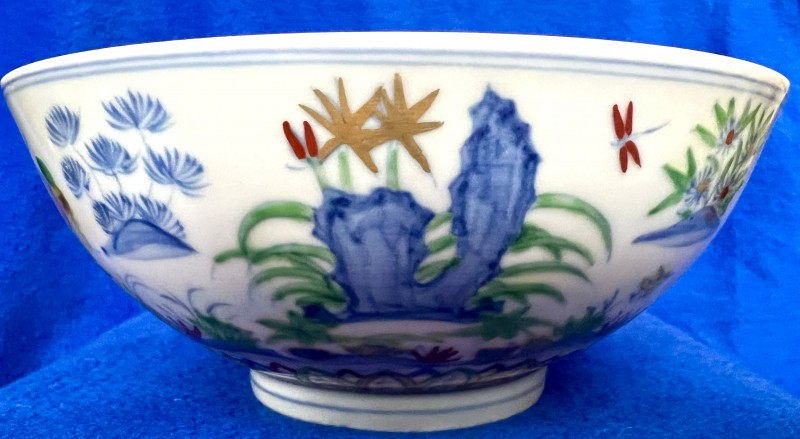
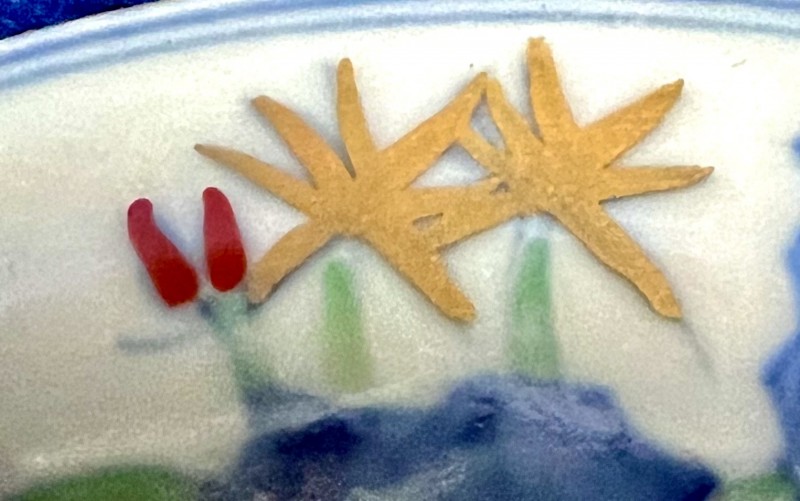
斗彩鸡缸杯和斗彩鸡碗的来历
The origin of Colorful Chicken Cup and Colorful Chicken Bowl
明朝成化帝留给后世的,是那些为皇贵妃万贞儿做的“斗彩成化瓷器”,因为万贵妃喜欢“奇巧之物” ,成化帝时期的那些薄透温润、细致可爱的斗彩鸡缸杯和斗彩鸡碗成了数百年来藏家追捧的极品,它们不只是成化朝代的工艺结晶,也是这段爱情的见证。
What Emperor Chenghua of the Ming Dynasty left to future generations were those "Colorful Chenghua porcelain" made for the imperial concubine Wan Zhen Er, because imperial concubine Wan liked "odd and clever things". The thin, warm, delicate, and lovely porcelain made during the Chenghua period The Colorful Chicken Cup and Colorful Chicken Bowl have been sought after by collectors for hundreds of years. They are not only the crystallization of the craftsmanship of the Chenghua Dynasty, but also the testimony of this love.
明朝大多数皇帝在人生中都充满了故事,朱见深却是最充满了传奇事故的皇帝。 他两岁那年,瓦剌大举进攻明朝,朱见深的父皇、明朝英宗帝朱祁镇在太监王振的怂恿下,潇洒地御驾亲征北去。一番壮志,却落得个悲惨下场,兵败如山倒,连皇帝本人都被俘虏。 国不能一日无君,太子朱见深才两岁,主小则国疑,在一些大臣的拥护下,朱祁镇的弟弟朱祁钰被扶上位,即景泰帝上位。既然当上了皇帝,当然琢磨着皇位永固。后来当瓦剌把朱祁镇放回来时,景泰帝不仅把哥哥软禁了,还废掉了朱见深的太子身份,把他赶出皇宫。懵懂年纪,朱见深便经历大起大落,尝尽人间辛酸。 好在朱见深刚被立为太子时,太后便派了一个19岁的宫女万贞儿照顾他。后来的岁月,无论多么艰难,万贞儿都一路相伴,既像母亲,又像姐姐。 朱见深10岁那年,父亲抓住一个机会,发动了“夺门之变”,再成皇帝,他又成了大明王朝的皇太子。也许是童年时期的不安全感影响太大,此后一直到长大登基,朱见深还是离不开万贞儿,两人索性发展出一段轰轰烈烈的“母子”不伦之恋。 《明史》中记载这个万贞儿“机警,善迎帝意……帝每有游幸,妃戎服前驱”。朱见深的母亲无法理解儿子怎会如此专宠这个老宫女,忍不住问他。朱见深的回答道:“彼抚摩,吾安之,不在貌也。”意思是这和年轻貌美无关,只是和她在一起,我心安。
Most emperors of the Ming Dynasty lived full of stories, but Zhu Jianshen was an emperor full of legendary stories. When he was two years old, Wala launched a large-scale attack on the Ming Dynasty. Zhu Jianshen's father, Emperor Yingzong of the Ming Dynasty Zhu Qizhen, was encouraged by the eunuch Wang Zhen to march north in person. A great ambition, but ended in tragedy: the army was defeated, and even the emperor himself was captured. A country cannot live without a king for a day. The prince Zhu Jianshen was only two years old, and the ruler was in doubt. With the support of some ministers, Zhu Qizhen's younger brother Zhu Qiyu was promoted to the throne, that is, Emperor Jingtai came to the throne. Now that he has become the emperor, of course he is thinking about the permanent throne. Later, when Wala released Zhu Qizhen back, Emperor Jingtai not only put his brother under house arrest, but also abolished Zhu Jianshen's status as prince and drove him out of the palace. At an ignorant age, Zhu Jianshen experienced ups and downs and tasted all the bitterness of the world. Fortunately, when Zhu Jianshen was just established as the prince, the Queen Mother sent a 19-year-old palace maid Wan Zhen Er to take care of him. In the later years, no matter how difficult it was, Wan Zhen Er was with her every step of the way, like a mother and a sister. When Zhu Jianshen was 10 years old, his father seized an opportunity and launched the "Seize the Gate Rebellion". He became emperor again, and he became the crown prince of the Ming Dynasty. Perhaps the insecurity in childhood was too influential. From then until he grew up and ascended the throne, Zhu Jianshen still couldn't live without Wan Zhen Er, and the two simply developed a vigorous "mother-son" illicit love. History of the Ming Dynasty’s records showed that this Wan Zhen Er was "alert and good at welcoming the emperor's wishes... whenever the emperor was lucky enough to travel, his concubines would march forward in uniform". Zhu Jianshen's mother couldn't understand how her son could dote on this old palace maid so much and couldn't help but ask him. Zhu Jianshen replied: "She touches me, and I feel at ease. It's not about her appearance." This means that it has nothing to do with being young and beautiful. It's just that being with her makes me feel at ease.
英宗复辟后,理论上成化皇太子应当重见光明了,但东宫的生活相当孤独,口吃的毛病让他变得内向,即便聪明美丽、能歌擅琴的少女们一一来到他身边,始终无人能如万贞儿那样,只从他一个眼神、一个举动就理解他的心意。十五六岁时,英宗去世,年少的朱见深成为一国之君,他必须承担起治国的责任,但口齿不伶俐的少年,要如何领导朝中的老狐狸?下了朝,总得有人做他的避风港。万贞儿的金刚怒目、专权善斗是对外人的,对待成化帝时,她极其周到细致。当皇帝出外时,她穿上军戎装在前护卫;在宫中,不准旁人随意惊扰皇帝休息;夜间当成化帝辗转反侧难以入睡时,只要 “彼抚摩,吾安之” ,俨然像 “垂帘听政” 。年龄、容貌、青春在他们之间从来不是问题,她能看见他的孤独与不安,而他看见她强悍泼辣之下的温柔。当这个高龄产妇生一个皇子时,成化帝欢喜若狂。但当孩子不幸夭折后,他也没有远离她。有没有孩子,从来不影响他们相爱,他们之间没有别人,是对方的保护者,也是被保护者,相濡以沫。
After the restoration of Yingzong, crown prince Chenghua should theoretically see the light again, but the life in the East Palace was quite lonely, and his stuttering problem made him introverted. Even though smart, beautiful girls who could sing and play the Guqin and Pipa came to him one by one, he always remained silent. No one can understand his thoughts just from his eyes and actions like Wan Zhen Er. When he was fifteen or sixteen years old, Yingzong passed away, and the young Zhu Jianshen became the king of the country. He must take on the responsibility of governing the country, but how can a young man who is not articulate lead the old fox in the court? When he is in the palace, someone must be his haven. Wan Zhen Er's angry, authoritarian, and aggressive attitude towards outsiders was very considerate and meticulous when dealing with Emperor Chenghua. When the emperor went out, she put on her military uniform to guard him; in the palace, no one else was allowed to disturb the emperor's rest; at night, when Emperor Cheng Hua was tossing and turning and unable to fall asleep, she just "touched him, and I am safe", just like "listening to the government behind the curtain”. Age, appearance, and youth have never been an issue between them. She can see his loneliness and uneasiness, and he can see her gentleness beneath her fierceness. When this elderly woman gave birth to a prince, Emperor Chenghua was ecstatic. But when the child died unfortunately, he did not stay away from her. Whether they have children or not has never affected their love for each other. There is no one else between them. They are each other's protectors and protected, and they support each other.
斗彩鸡缸杯和斗彩鸡碗烧制于明朝成化时期,因碗壁内外画有鸡的图案,故此得名。关于斗彩鸡缸杯和斗彩鸡碗的来历,传说是成化帝为万贵妃所制,是送给万贵妃的珍贵礼物。
The Colorful Chicken Cup and Colorful Chicken Bowl were fired during the Chenghua period of the Ming Dynasty. They were named after the patterns of chickens painted on the inside and outside of the bowl walls. As for the origin of Colorful Chicken Cup and Colorful Chicken Bowl, it is said that Emperor Chenghua made it for Imperial Concubine Wan as a precious gift.
成化帝为什么御制斗彩鸡缸杯和斗彩鸡碗?这是二人的隐秘世界,目前尚无法考证。 据史书记载,成化帝热衷于书画,艺术天分极高。有一次,他欣赏宋代人画的《子母鸡图》,看到母鸡带着几只小鸡觅食的温馨场景,非常有感触,便计划制作斗彩鸡缸杯,送给万贵妃赏玩,制作斗彩鸡碗,为自己赏玩,享有酒足饭饱、快乐人生的惬意。 当然也有人从另一个更血腥的版本解读斗彩鸡缸杯和斗彩鸡碗的来历:万贞儿37岁时,生下皇子,朱见深高兴坏了,立她为皇贵妃。可惜,这个孩子不满1岁就夭折了。据说孕嗣无望,万贵妃此后为祸后宫,残害其他嫔妃和皇嗣(皇太子),但朱见深出于一片真心,对她依然宠爱有加,不忍责难,故制作斗彩鸡碗和斗彩鸡缸杯,选择一个红胎和一个白胎,一个代表自己(红),一个代表万贵妃(白),红白相容,寓意和谐相处,恳请万贵妃宽容待人、手下留情。
Why did Emperor Chenghua make the Colorful Chicken Cups and the Colorful Chicken Bowls? This is the secret world of the two people, which cannot be verified yet. According to historical records, Emperor Chenghua was keen on calligraphy and painting and had extremely high artistic talent. Once, he admired the "Pictures of Hens and Chicks" painted by people in the Song Dynasty. He was very moved when he saw the warm scene of a hen looking for food with several chicks and planned to make a colorful chicken cup for Imperial Concubine Wan to enjoy, and make colorful chicken bowl for himself, and enjoy the comfort of having enough food and wine, and a happy life. Of course, some people interpret the origins of the Colorful Chicken Cup and Colorful Chicken Bowl from another, bloodier version: When Wan Zhen Er was 37 years old, she gave birth to a prince. Zhu Jianshen was so happy that he made her the imperial concubine. Unfortunately, the child died before he was 1 year old. It is said that Imperial Concubine Wan, who had no hope of having an heir, brought trouble to the harem, and killed other concubines and the emperor's heirs (Crown Prince). However, Zhu Jianshen still loved her very much out of his sincerity and could not bear to blame her, so he made colorful chicken cup and colorful chicken bowl, choose a red carcass and a white carcass, one representing yourself (red) and the other representing Imperial Concubine Wan (white). Red and white are compatible, implying harmonious coexistence, kindly requesting Imperial Concubine Wan to be tolerant and merciful to others.
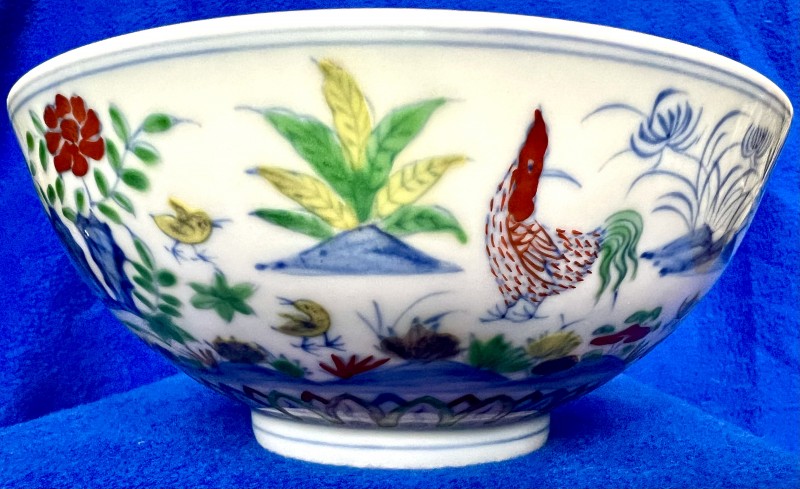

人人都知道斗彩鸡缸杯,因为拍卖斗彩鸡缸杯创下了古瓷器行业的巅峰,拍卖时呈几亿、十几亿的价格飙升。斗彩鸡缸杯是成化帝献给皇贵妃万贞儿的礼物,而斗彩鸡碗是成化帝献给自己的礼物,做的极其精致,它是皇权的象征,要世代流传,因为保住了饭碗,才能保住政权,才能保住江山!因此,斗彩鸡碗此后成为明朝皇家的御用私藏珍品,一代一代地向下传递,一直传到明朝最后一位皇帝朱由检(1611年2月6日—1644年4月25日)。
Everyone knows about the colorful chicken cups, because the auction of the colorful chicken cup hit the pinnacle of the ancient porcelain industry, with prices soaring from hundreds of millions to more than billions at the auction. The colorful chicken bowl was a gift from Emperor Chenghua to the imperial concubine Wan, while the colorful chicken bowl was a gift from Emperor Chenghua to himself. It is extremely exquisite. It is a symbol of imperial power and needs to be passed down through the generations. Because only by keeping your bowl can you keep your political power and your country! Therefore, the colorful chicken bowls became the private treasures of the Ming Dynasty royal family and were passed down from generation to generation until the Ming Dynasty last Emperor Zhu Youjian (February 6, 1611 - April 25, 1644).
朱由检,字德约,明朝光宗的第五子,明熹宗异母弟。他于公元1627年至1644年在位,年号 “崇祯” 。崇祯帝一生操劳,夜以继日地批阅奏章,节俭自律,不近女色。
Zhu Youjian, courtesy name Deyue, was the fifth son of Guangzong of the Ming Dynasty and half-brother of the Ming Xizong. He reigned from 1627 to 1644 AD, with the reign name "Chongzhen". Emperor Chongzhen worked hard all his life, reviewing memorials day and night, being frugal and self-disciplined, and not close to women.
崇祯年间的勤奋,与万历、天启相较,朝政有了明显改观。即位之初就大力铲除阉党,曾六度下诏罪己,惜其生性猜忌多疑,毕生独揽大权,未善与官员放心合作,故无法挽救走向穷途末路的明朝。崇祯时期,国内民变与自然灾害不断,关外后金政权虎视眈眈,已处于内忧外患的境地。
Compared with Wanli and Tianqi, the diligence during the Chongzhen period resulted in significant changes in government affairs. When he came to the throne, he vigorously eradicated the eunuchs and issued edicts six times. Unfortunately, he was jealous by nature, monopolized power all his life, and was not good at cooperating with officials, so he could not save the Ming Dynasty, which was on the verge of collapse. During the Chongzhen period, domestic civil commotions and natural disasters continued, and the Houjin regime outside the country was eyeing the country. It was already in a situation of internal and external troubles.
崇祯十七年(1644年),起义军领袖李自成攻破北京紫禁城,崇祯帝于四面楚歌之中在皇宫北侧的景山老歪脖子树上自缢身亡。死时光着左脚,右脚穿着一只红鞋,(红色象征着朱家,朱是鲜红的颜色),死於崇祯甲申三月十九日丑时,时年33岁,身边仅有提督太监王承恩陪同。为什么只穿一只红鞋,因为他毁了明王朝,愧对于明朝开国元老朱元璋,愧对于朱家。崇祯自缢殉国,其所统治的明王朝也随即灭亡。
In the seventeenth year of Chongzhen (1644), the leader of the rebel army Li Zicheng broke through the Forbidden City in Beijing. Emperor Chongzhen, surrounded by enemies, hung himself on the old, crooked neck tree in Jingshan on the north side of the palace. He died with his left foot bare and his right foot wearing a red shoe (red symbolizes the Zhu family, and Zhu is the bright red color). He died on the 19th of March in Jiashen, Chongzhen, at the age of 33, with only the eunuchs around him. Accompanied by Wang Chengen. Why did he only wear one red shoe? Because he ruined the Ming Dynasty, and was ashamed of Zhu Yuanzhang, the patriarch of the Ming Dynasty and ashamed of his Zhu family Chongzhen hanged himself and died for his country, and the Ming Dynasty he ruled also perished.
崇祯统治时期,重用葡萄牙军队,也埋下隐患。崇祯二年二月,32个葡萄牙铳师在公沙的带领下,携带多门枪炮去往北京。同年,皇太极从张家口杀入华北,派重兵把守临近北京的遵化、滦州等四城,准备来年再攻京城。然而当葡萄牙铳师到达北京后,跟随明军攻打四城,在凌厉的西洋大炮面前,满洲八旗溃不成军,四城丢失。战斗胜利后,葡萄牙人得到了崇祯的亲自嘉奖,葡萄牙人在紫禁城内纸醉金迷、骄奢淫逸,紫禁城数年成为葡萄牙人的游乐场地,因此对紫禁城有充分的了解,知道什么是皇家最宝贵的东西。崇祯自缢后,皇家的斗彩鸡碗被葡萄牙人盗走,流落到海外,辗转到不同的国度。因此,北京故宫博物院和台北故宫博物院都缺乏这件明皇宫紫禁城的世代传家宝。
During the reign of Chongzhen, the heavy use of the Portuguese army also posed hidden dangers. In February of the second year of Chongzhen, 32 Portuguese gunnery divisions, led by Gongsha, went to Beijing carrying many guns and cannons. In the same year, Huang Taiji entered North China from Zhangjiakou and sent heavy troops to guard Zunhua, Luanzhou and other four cities near Beijing, preparing to attack the capital again next year. However, when the Portuguese gunnery division arrived in Beijing, they followed the Ming army to attack the four cities. In the face of the powerful Western artillery, the Eight Banners of Manchuria collapsed, and the four cities were lost. After the victory in the battle, the Portuguese were personally commended by Chongzhen. They indulged themselves in extravagance and extravagance in the Forbidden City. The Forbidden City became the Portuguese activity venue for several years. Therefore, they had a full understanding of the Forbidden City and knew what the most precious thing of the royal family was. After Chongzhen hanged himself, the royal colorful chicken bowl was stolen by the Portuguese and flown overseas to different countries. Therefore, both the National Palace Museum in Beijing and the National Palace Museum in Taipei lack this generational heirloom from the Forbidden City of the Ming Dynasty.
斗彩鸡缸杯和斗彩鸡碗,明代瓷器之冠
The Colorful Chicken Cup and Colorful Chicken Bowl, the crown of Ming Dynasty porcelain
斗彩鸡缸杯和斗彩鸡碗无疑受成化帝个人的影响很深。因为斗彩鸡碗流落到海外,在中国没有多少古董收藏家和古董鉴定专家真正见到过它的原貌,见到的也是传说中想象的“斗彩鸡碗”的意向复制品。
The Colorful Chicken Cup and Colorful Chicken Bowl were undoubtedly deeply influenced by Emperor Chenghua. Because the colorful chicken bowl has been exported overseas, not many antique collectors and antique appraisal experts in China have seen its original appearance. What they have seen is an intended replica of the legendary and imagined "chicken bowl".

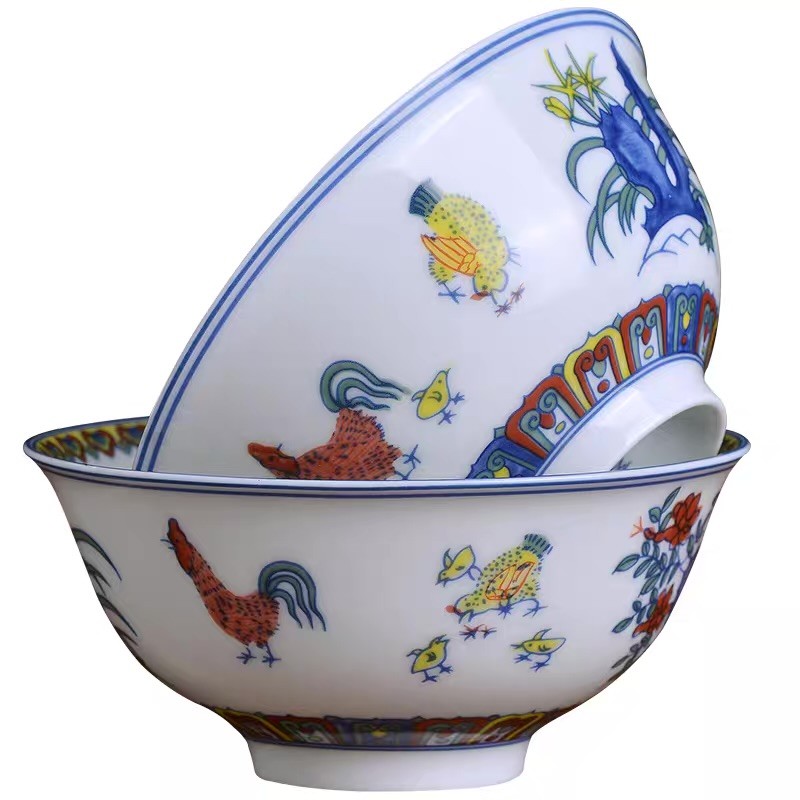 仿制的斗彩鸡碗
仿制的斗彩鸡碗
故宫所藏的斗彩鸡缸杯,高3.3厘米,口径8.3厘米,足径4.1厘米。敞口,卧足,硕底,形如水缸,给人以“小器大样”之感。杯外共4组纹饰:一组为兰花柱石;一组为芍药柱石;一组为子母鸡5只,雄鸡昂首长鸣,母鸡啄虫哺雏;另一组也绘子母鸡。色彩上,用红、绿、黄、赭和釉下青花结合,红彩鲜艳,黄、绿彩光亮,醒目而活泼。 斗彩鸡缸杯流传至今的很少,全世界加起来不超过16件。主要集中在故宫、台北故宫和一两家大的博物馆里,私人手中极其少见,但复制品也开始泛滥。
The colorful chicken cup stored in the Forbidden City is 3.3 cm high, 8.3 cm in diameter, and 4.1 cm in full diameter. It has an open mouth, lying feet, and a huge bottom, shaped like a water tank, giving people the feeling of "a small vessel with a large appearance". There are four groups of decorations on the outside of the cup: one group is orchid pillars; one group is peony pillars; one group is five hens, with roosters holding their heads high and crowing, and hens pecking insects and feeding their chicks; the other group is also painted with hens. In terms of color, red, green, yellow, ocher and underglaze blue and white are combined. The red color is bright, the yellow and green colors are bright, eye-catching, and lively. There are very few colorful chicken cups that have been handed down to this day. There are no more than 16 pieces in the world. They are mainly concentrated in the National Palace Museum, Taipei National Palace Museum and one or two large museums. They are extremely rare in private hands, but replicas are also beginning to proliferate.
斗彩鸡碗与斗彩鸡缸杯明显不同,制作时的思路完全不同。碗大气,代表成化帝时代的辉煌;杯小巧,代表万贵妃娇柔。除了有大小差别之外,胎体也有区别,采用一红一白,碗用红胎,杯用白胎,二者和谐相处,相得益彰。斗彩鸡碗的纹饰更复杂,靠近碗的底部有莲花宝座,碗属于神位,归皇帝所有,寓意皇上因终日听天神讲育真经,而悟得修仙之术,并依此潜心修行,不断吸取天地精气,最终修炼成神。上面是沃土和不同色彩的植被、枝叶和花草,寓意万物生长,其中二支枝干每支贴上4条金叶,预示四平八稳;一支枝干贴上6条金叶,预示六六大顺。土地上面的两侧是两只雄鸡昂首长鸣,两只母鸡喂食小鸡。再上面是一组为兰花柱石,兰花中贴上金条花瓣;另一侧为两株红色牡丹花,寓意牡丹花开,繁花似锦,灿烂辉煌,荣华富贵。两株牡丹,也象征成化帝与万贵妃纯洁与爱情,又寓意国尊繁荣昌盛,家重富贵平安,人喜幸福吉祥。牡丹茎叶上有两只金鸟相伴,上面还有蜻蜓飞翔。牡丹花的旁边为万年青枝叶,寓意生机勃勃、健康长寿、江山稳定! 碗内底部为雄鸡昂首长鸣,旁边有小鸡相伴,寓意代代相传。雄鸡也代表雄风,代表皇权至高无上、大展宏图,也寓意功成名就、吉祥如意!同时也充满“不鸣则已,一鸣惊人” 的抱负与志向!周围是莲花祥云,之间植入4群莲花种子,表达了吉祥、喜庆、幸福的愿望以及对生命和传承的美好向往。最上面是由不同色彩、对称的兰花花瓣环绕。兰花的花语是淡泊、高雅、美好、高洁、贤德,也有经久不衰和富贵长寿之意,因此也可形容为子孙满堂,后代昌盛。
The Colorful Chicken Bowl is obviously different from the Colorful Chicken Cup. The idea when making it is the bowl is grand, representing the glory of Emperor Chenghua's era; the cup is small, representing the delicateness of Imperial Concubine Wan. In addition to the difference in size, there are also differences in the carcass. One is red and one is white. The red carcass is used for the bowl and the white carcass is used for the cup. The two coexist harmoniously and complement each other. The pattern of the colorful chicken bowl is more complex. There is a lotus throne near the bottom of the bowl, which belongs to the throne of God and belongs to the emperor. It means that the emperor understood the art of cultivating immortals and devoted himself to practicing it because he listened to the gods' sermons all day long. Continuously absorb the essence of heaven and earth, and eventually cultivate to become a god. Above it is fertile soil and vegetation, branches, leaves and flowers of different colors, which symbolize the growth of all things. Two of the branches are each covered with 4 gold leaves, indicating stability; one branch is covered with 6 gold leaves, indicating good luck in the six. On both sides of the land are two roosters crowing, and two hens feeding their chicks. the other group is of peony pillars, with two gold birds accompanying them and a dragonfly flying above. On the other side are two red peonies, which means that the peonies are blooming, blooming, brilliant, prosperous, and wealthy. The two peonies also symbolize the purity and love between Emperor Chenghua and Imperial Concubine Wan. They also imply the prosperity of the country, the wealth and peace of the family, and the happiness and good fortune of the people. There are two golden birds accompanying each other on the stems and leaves of peonies with dragonflies flying above them. Next to the peony flowers are evergreen branches and leaves, which symbolize vitality, health and longevity, and stability! The bottom of the bowl is a rooster with its head raised and crowing, accompanied by chicks, which symbolizes inheritance from generation to generation. The rooster also represents majesty, the supremacy of imperial power and grand ambitions, and implies success and good luck! At the same time, it is also full of ambitions and aspirations of "If you don't make a sound, you will be a blockbuster"! Surrounded by auspicious clouds of lotus flowers, four groups of lotus seeds are implanted in the middle, expressing wishes of auspiciousness, jubilation, happiness and a beautiful yearning for life and inheritance. The top is surrounded by symmetrical orchid petals of different colors. The flower language of orchids is indifferent, elegant, beautiful, noble, and virtuous. It also means longevity, wealth, and longevity. Therefore, it can also be described as a house filled with descendants and prosperous future generations.
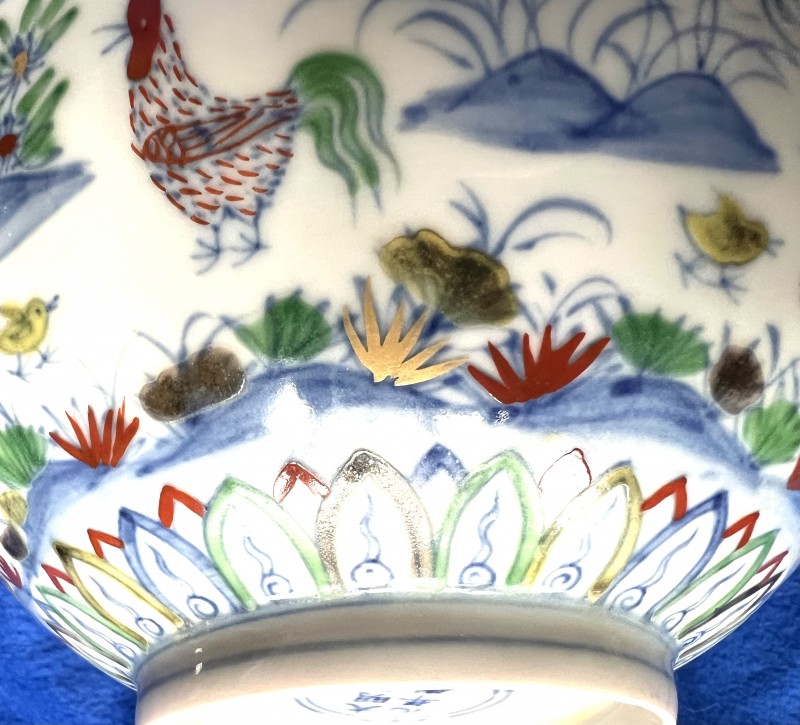
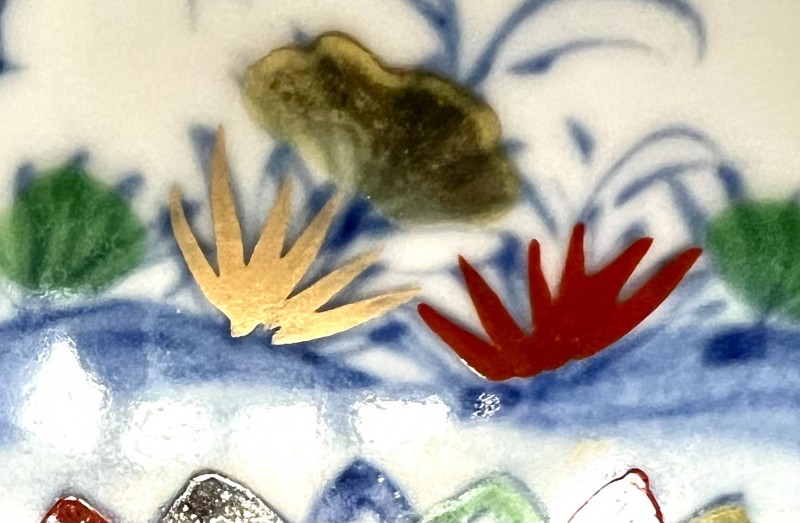
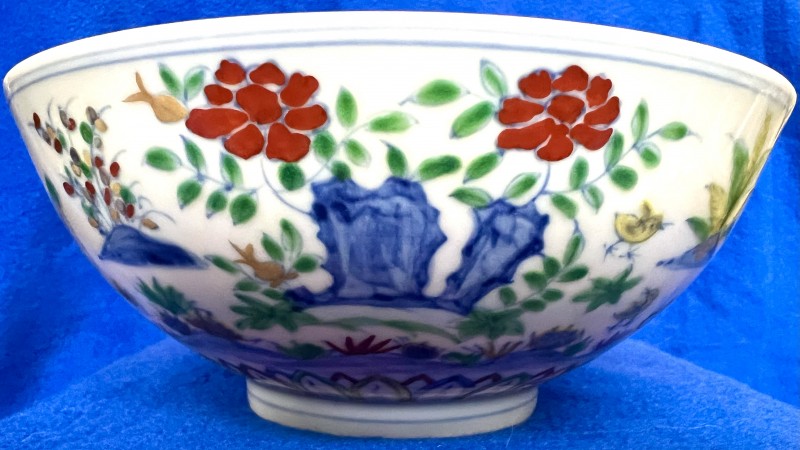
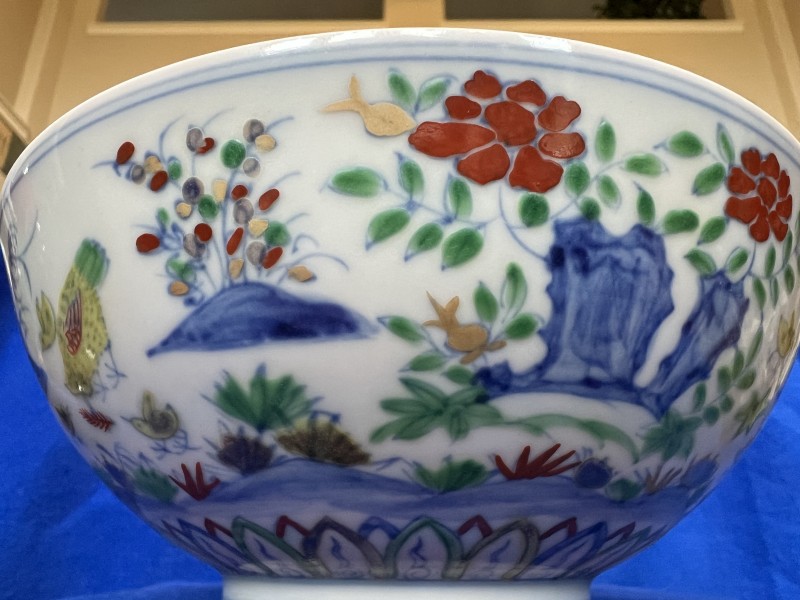
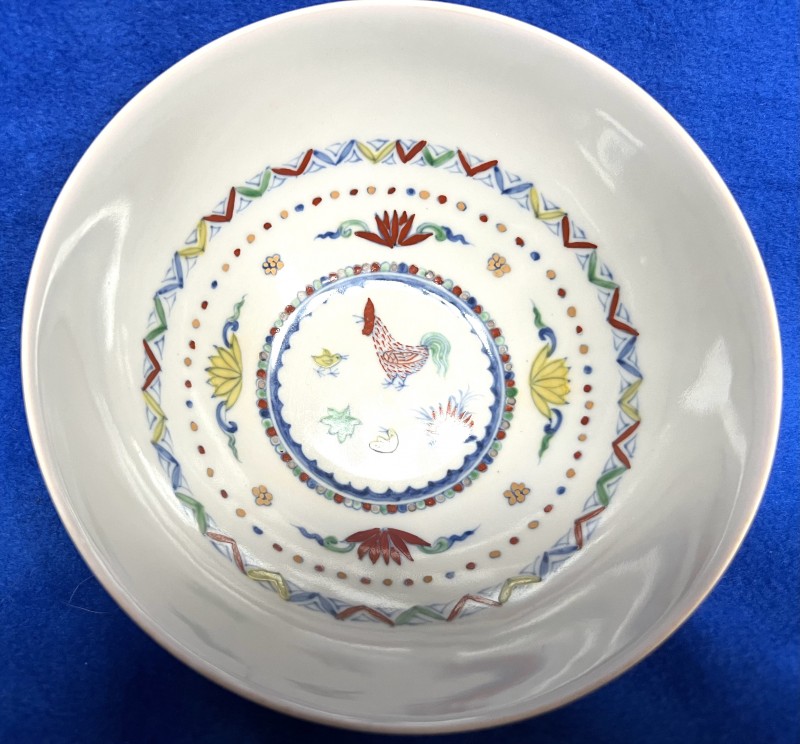
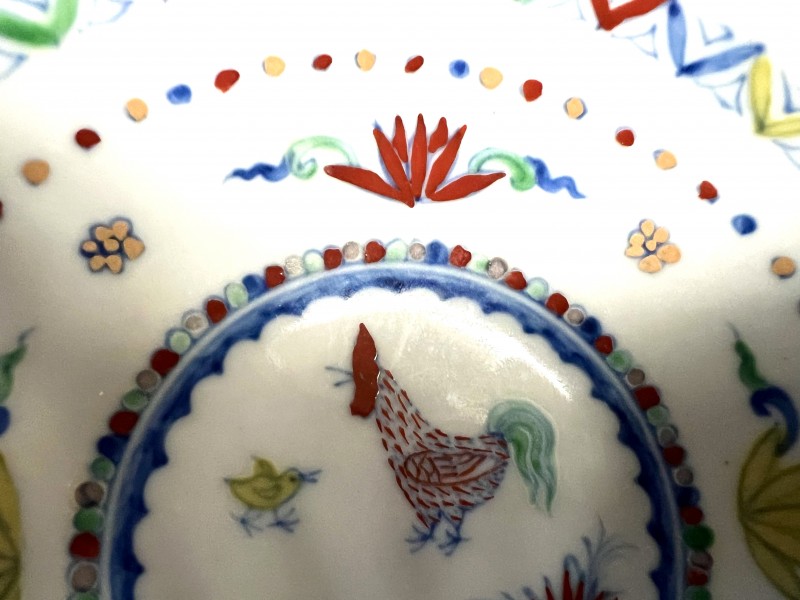
在明代,斗彩是一种“天家器物”,主要供宫廷赏玩,难得流落民间。从技艺上说,因为用料、用彩讲究,在釉上绘上3、4种色彩,最多达6至8种色彩,而且每一种颜色中也有多个层次,比如光是黄色,就有杏黄、蜜蜡黄、姜黄多种,烧成后鲜亮夺目,加上胎体紧密莹薄,迎光似透明,甚至薄如蝉翼,自然深受追捧。
In the Ming Dynasty, Dou Cai was a kind of "heavenly artifact", mainly for the palace to enjoy, and rarely found among the people. From a technical point of view, because of the careful use of materials and colors, 3 or 4 colors are painted on the glaze, up to 6 to 8 colors, and each color also has multiple levels. For example, just yellow, there are many kinds of apricot yellow, beeswax yellow, and turmeric. They are bright and eye-catching after being fired. In addition, the carcass is compact and translucent, making it seem transparent to the light, or even as thin as cicada wings, so it is naturally very popular.
据《明史·食货志》记载,成化一朝,朝廷不断增加官瓷费用的投入,不管花费,只求结果。为烧成一件器物,不惜制作数十、数百,把其中最好的拿出来上供朝廷,次品全都打碎。如此高标准、严要求之下,当然出的都是精工细活,每次出现都是一件传奇古董。成化斗彩瓷器之所以成为经典至宝,就是因为稀世罕见。继成化之后,斗彩鸡缸杯和斗彩鸡碗在历代都被模仿,却从未被超越。
According to the "History of Ming Dynasty·Shihuo Zhi", during the Chenghua Dynasty, the imperial palace continued to increase its investment in official porcelain expenses, regardless of the cost, only seeking results. To burn a single utensil, dozens or hundreds were made, and the best ones were presented to the court, while all the defective ones were smashed. Under such high standards and strict requirements, of course everything produced is exquisitely crafted, and every time it appears, it is a legendary antique. The reason why Chenghua Dou Cai porcelain has become a classic treasure is because it is rare. Following Chenghua, the colorful chicken cups and colorful chicken bowls have been imitated throughout the ages but have never been surpassed.
泉深微信号:Lionchu888








